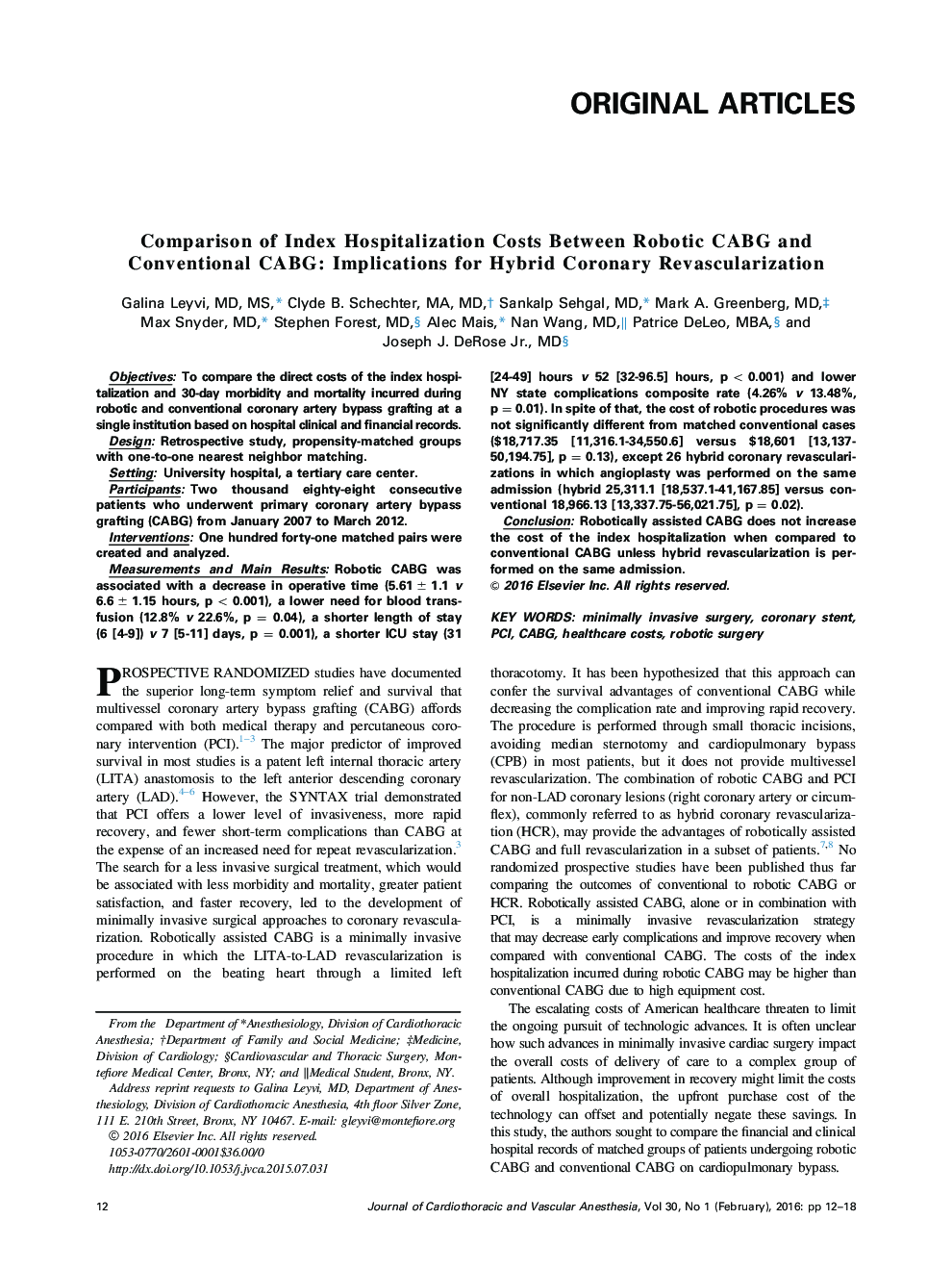| Article ID | Journal | Published Year | Pages | File Type |
|---|---|---|---|---|
| 2759077 | Journal of Cardiothoracic and Vascular Anesthesia | 2016 | 7 Pages |
ObjectivesTo compare the direct costs of the index hospitalization and 30-day morbidity and mortality incurred during robotic and conventional coronary artery bypass grafting at a single institution based on hospital clinical and financial records.DesignRetrospective study, propensity-matched groups with one-to-one nearest neighbor matching.SettingUniversity hospital, a tertiary care center.ParticipantsTwo thousand eighty-eight consecutive patients who underwent primary coronary artery bypass grafting (CABG) from January 2007 to March 2012.InterventionsOne hundred forty-one matched pairs were created and analyzed.Measurements and Main ResultsRobotic CABG was associated with a decrease in operative time (5.61±1.1 v 6.6±1.15 hours, p<0.001), a lower need for blood transfusion (12.8% v 22.6%, p = 0.04), a shorter length of stay (6 [4-9]) v 7 [5-11] days, p = 0.001), a shorter ICU stay (31 [24-49] hours v 52 [32-96.5] hours, p<0.001) and lower NY state complications composite rate (4.26% v 13.48%, p = 0.01). In spite of that, the cost of robotic procedures was not significantly different from matched conventional cases ($18,717.35 [11,316.1-34,550.6] versus $18,601 [13,137-50,194.75], p = 0.13), except 26 hybrid coronary revascularizations in which angioplasty was performed on the same admission (hybrid 25,311.1 [18,537.1-41,167.85] versus conventional 18,966.13 [13,337.75-56,021.75], p = 0.02).ConclusionRobotically assisted CABG does not increase the cost of the index hospitalization when compared to conventional CABG unless hybrid revascularization is performed on the same admission.
